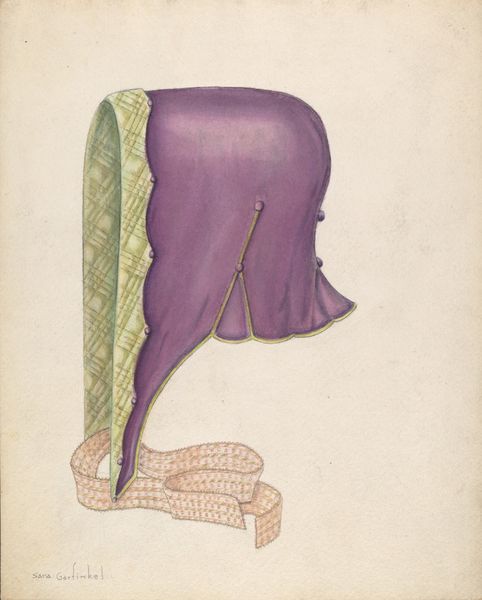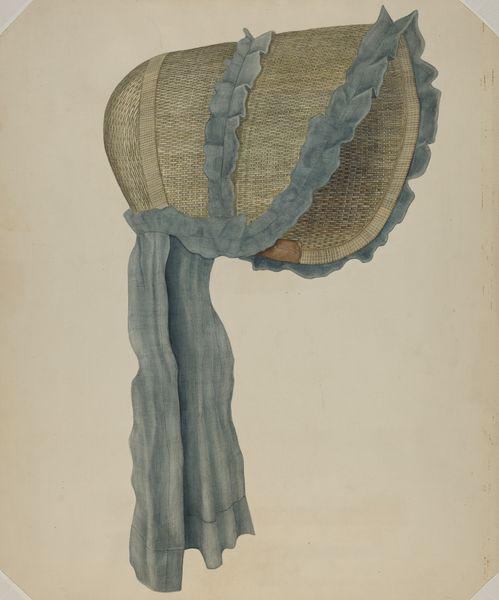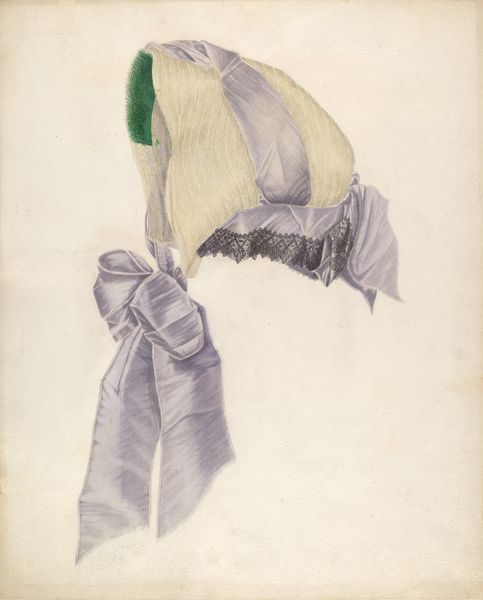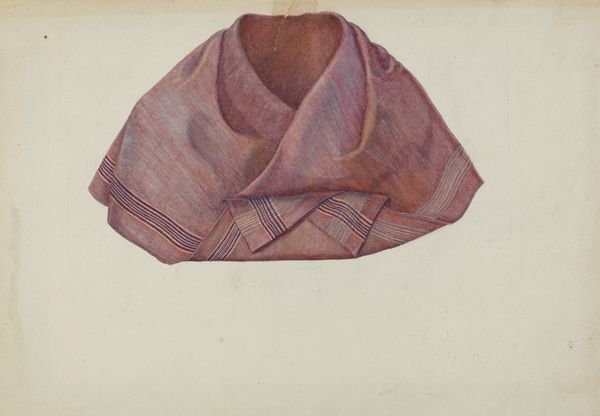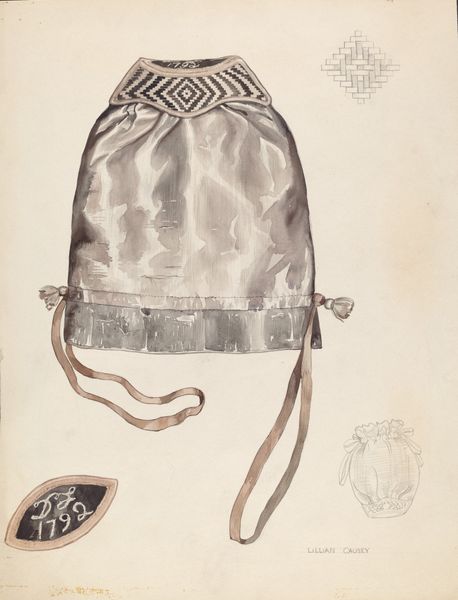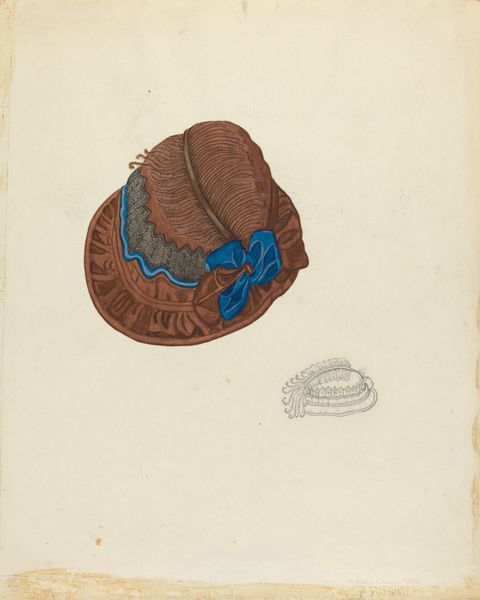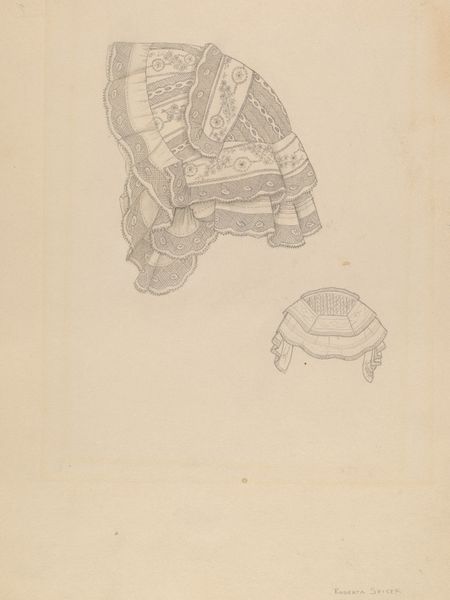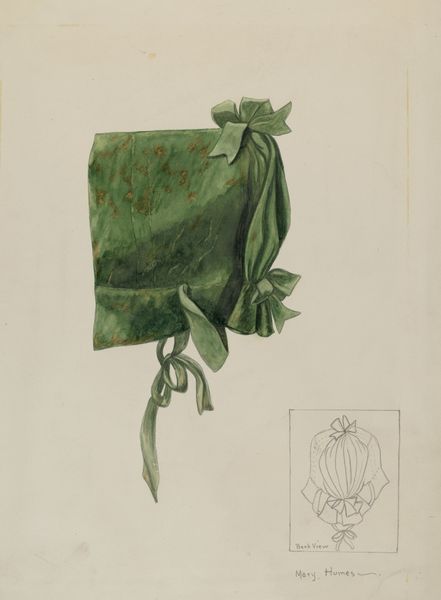
drawing, coloured-pencil, watercolor
#
drawing
#
coloured-pencil
#
watercolor
#
coloured pencil
#
watercolor
Dimensions: overall: 29.8 x 22.7 cm (11 3/4 x 8 15/16 in.)
Copyright: National Gallery of Art: CC0 1.0
Curator: Here we have Fanchon Larzelere’s "Bonnet," created around 1937, using watercolor and colored pencil. What's your first take? Editor: There's a delicacy to it. A little fragile, a study of form, definitely evocative of another era. It feels precious, maybe hinting at the domestic labor it implies? Curator: Yes, I see that too. This bonnet, seemingly simple, reflects broader socio-economic histories related to fashion and the material conditions of women during the pre-war period. How would an everyday object such as a bonnet play its part? Editor: The rendering seems so precise; one can almost feel the weight of the fabric and see the texture of the lace. Is this precision a form of valuing the handmade? Think of the unseen hands involved in the fabrication of this delicate object – the spinner, the weaver, the lacemaker... Curator: Absolutely, the bonnet then functions as a kind of status marker. Who could afford this versus something mass-produced? What cultural messages would this bonnet signal? These illustrations were probably produced for sale or personal records, capturing moments in fashion history, the history of feminine ideals... Editor: This focus on the handcrafted does speak volumes about its implied function. It serves both a practical and aesthetic need for its wearer. What if the colors signify certain socio-economic indicators in the early part of the 20th century, telling stories of the wearer’s status? Curator: Color symbolism absolutely played a part. Bonnets weren't simply functional objects. And thinking of the archival function, what kind of audiences was this for? Fellow designers? A middle-class lady keeping track of latest fashions, or documenting and emulating styles from illustrated magazines? Editor: Looking closer, you’re correct in noting its fashion plate function. How meticulously it shows how the thing hangs, how it’s made up from parts…it also looks a bit home-made – and those colours! Is this an affectation, to imitate wealthier clothes but on a more constrained budget? It's intriguing to consider. Curator: Precisely. This drawing makes us consider the garment’s journey through social classes, the ways the wearers were making, or re-making themselves through fashion. Editor: Yes, looking past the art of it, there's an element of production involved. The choices – to depict in coloured pencil or watercolor—become deeply considered ones that show much thought, consideration and skill.
Comments
No comments
Be the first to comment and join the conversation on the ultimate creative platform.
